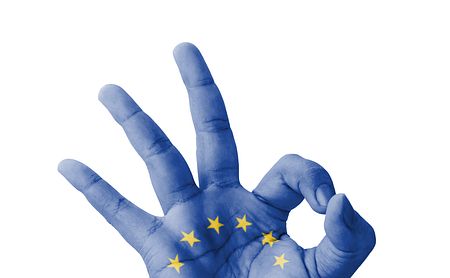EMA Group Favors Naming SLS-005 an Orphan Drug for ALS

A committee with the European Medicines Agency favors designating Seelos Therapeutics‘ investigational therapy SLS-005 (trehalose) an orphan drug as a potential treatment of amyotrophic lateral sclerosis (ALS), the company announced in a press release.
The opinion, issued by the Committee for Orphan Medicinal Products (COMP), will now go to the European Commission (EC) for a final decision, which is expected within 30 days.
The U.S. Food and Drug Administration (FDA) gave SLS-005 a similar designation for ALS late last year. Orphan drug status is given to investigative therapies with the potential to be safe and effective for rare, life-threatening, or chronically debilitating conditions with no approved treatments, or to those showing significant benefit over existing treatments.
The designation is meant to accelerate a treatment’s clinical development and review by providing regulatory support and financial benefits, including marketing exclusivity — for 10 years in Europe and seven in the United States — should it be approved.
SLS-005 consists of a naturally occurring sugar called trehalose, thought to help to protect neurons from damage by activating a cellular “recycling” process called autophagy. Cells use autophagy to break down old and defective proteins, and to clear clumps of proteins before they grow to toxic levels.
Several proteins, such as TDP-43 and SOD1, are known to contribute to ALS by accumulating to these harmful levels in nerve cells. Preclinical studies showed that SLS-005’s use increased removal of these clumps, delaying the progression of ALS symptoms at the molecular level, while preserving motor neurons and muscle fiber size.
Importantly, SLS-005 can cross the blood-brain barrier to access nerve cells of the central nervous system (the brain and spinal cord), which are progressively damaged over the course of ALS.
Trehalose is found in various plants, bacteria, fungi, and invertebrates, but not in human cells.
SLS-005 is currently being tested in the HEALEY clinical trial platform (NCT04297683), aiming to speed the development of promising ALS therapies by evaluating multiple potential treatments simultaneously.
In each regimen, 160 patients are randomized to either the investigative therapy or a placebo in a 3:1 ratio, meaning that for every three patients on a treatment, one will be given a placebo. Treatment will last 24 weeks.
Safety and efficacy are the main goals in assessing each therapy. Effectiveness is evaluated through evidence of disease progression during the trial, using the ALS Functional Rating Scale-Revised (ALSFRS-R), which measures changes in patients ability to walk, climb stairs, breathe easily, dress themselves and swallow, among other abilities. Changes in patients’ muscle strength and lung function will also be evaluated.
HEALEY may still be recruiting eligible adults with ALS at sites across the U.S.; contact and other information is available here.
SLS-005 is also a candidate therapy for other conditions. The EC has designated it an orphan drug as a possible treatment of Sanfilippo syndrome. Both the FDA and the European Medicines Agency gave it a similar designation for spinocerebellar ataxia type 3, and for oculopharyngeal muscular dystrophy (OPMD). The FDA also placed SLS-005 on its fast track for OPMD.






